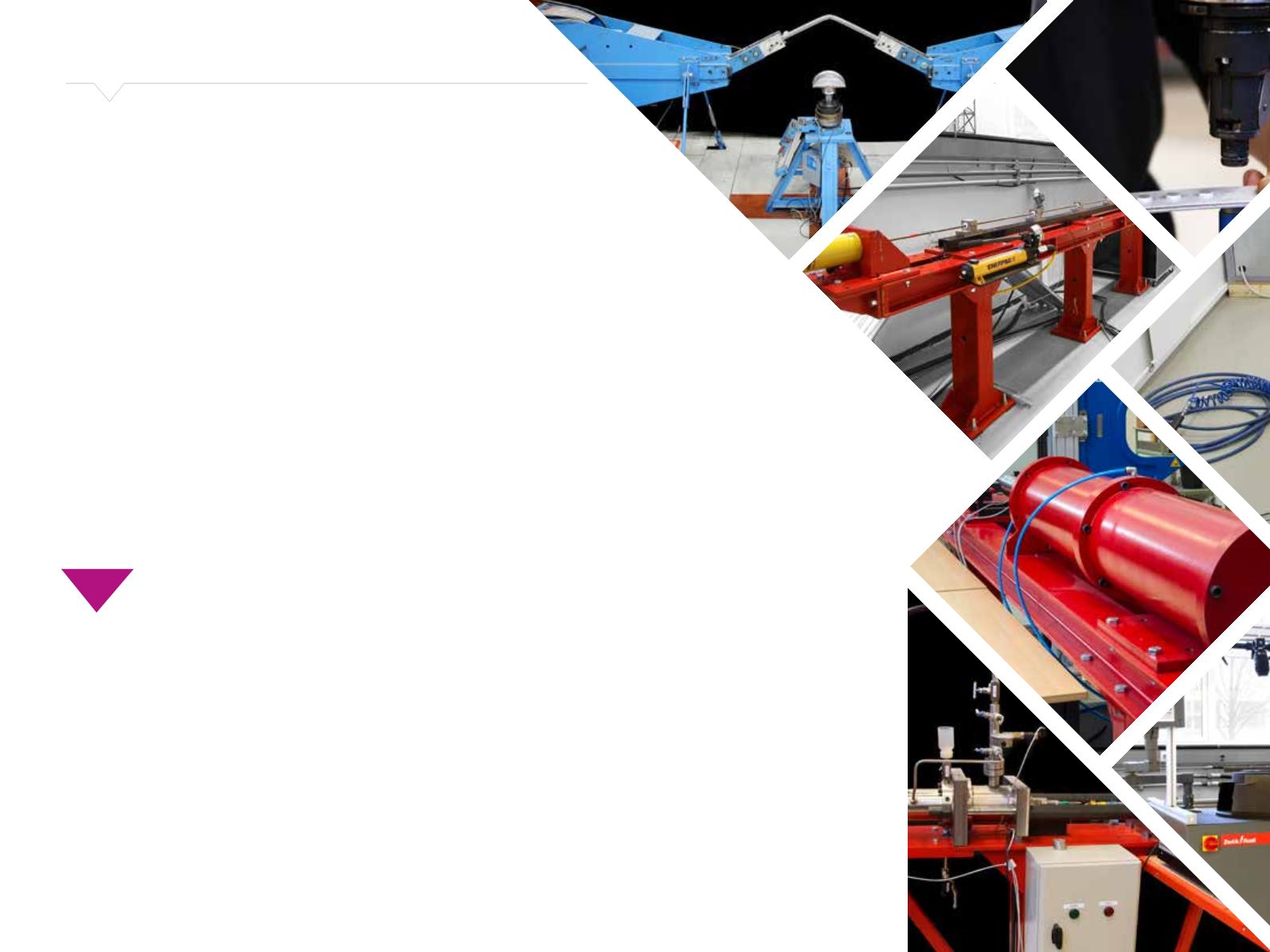

20
Test facilities
Gas Gun (1)
This is a compressed gas gun for ballistic impact studies. A
variety of projectile geometries can be fired, with a maximum
velocity of 1000 m/s.
Hydro-pneumatic machine (HPM) (2)
The hydro-pneumatic machine (HPM) is a device for tensile
material testing. It operates in the strain–rate range between
1 and 100 s
-1.
Pendulum impactor (Kicking Machine) (3)
The pendulum accelerator is a device for impact testing of
components and structures. The test rig accelerates a trolley
on rails towards a test specimen fixed to a reaction wall. The
accelerating system consists of an arm that is connected to
a hydraulic/pneumatic actuator system. The maximum energy
delivered to the trolley is approximately 500 kJ. At present the
mass of the trolley is in the range between 800 -1500 kg, giving
a maximum velocity between 35 m/s and 26 m/s.
Self-piercing riveting machine (4)
In this machine self-piercing riveting can be carried out of
sheets under industrial conditions.
Sheet metal forming machine (BUP) (5)
This multi-purpose hydraulic sheet metal forming machine is
designed to test the formability of sheet metals. The machine
has a 600 kN load capacity, a maximum clamping force of 50
kN, a maximum test stroke of 120 mm and a maximum test
speed of 750 mm/min.
Split-Hopkinson tension bar (SHTB) (6)
The split-Hopkinson tension bar is a device for material testing
at strain rates in the range between 100 and 1500 s
–1
. Data
is recorded with strain gauges and high speed cameras. An
induction heater facilitates tests at elevated temperatures.
Stretch bending rig (7)
The stretch-bending rig applies a combined bending and
axial tensile/compressive loading to the test component. The
length of the specimens is 1-2 m, and they are bent around an
exchangeable die with a defined curvature. The rig has been
employed in tests where the bending operation of car bumpers
is studied. It has also been used to study the behaviour of
pipelines subjected to impact and subsequent stretching.
Droptower impact system (8)
In this machine impact testing of materials and small
components can be carried out at low and high temperatures.
The mass of the projectile ranges from 2-70 kg and gives
an impact velocity in the range 0.8-24 m/s. All tests can be
carried out with an instrumented nose which gives the impact
force as a function of time.
Split-Hopkinson pressure bar (9)
The split-Hopkinson pressure bar consists of a high-pressure
chamber unit that can accelerate a projectile against the end
of the input bar.
Test facilities
7
4
9
2
6
Photos 1, 2, 4, 5, 6 and 7: Melinda Gaal
Photos 3 and 8 – 10 and 12: Ole Morten Melgård
SFI CASA has access to test facilities in several laboratories
at NTNU and SINTEF. Below is a list of the most important
testing equipment. Please go to our website to read more
about the Centre’s laboratories:
www.ntnu.edu/casa

















